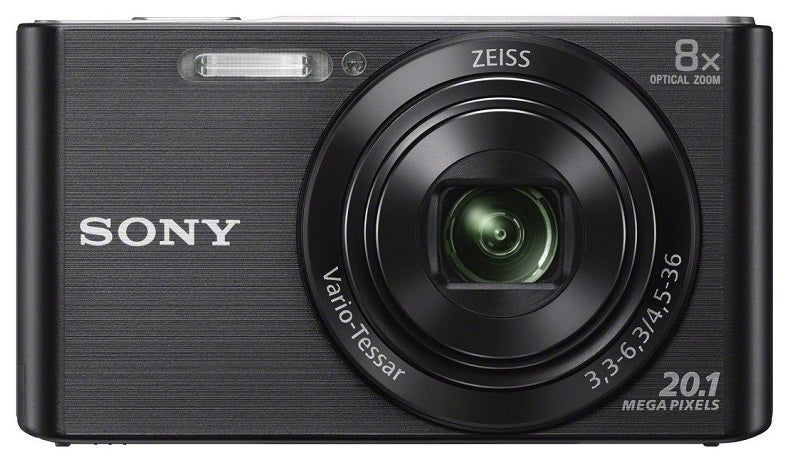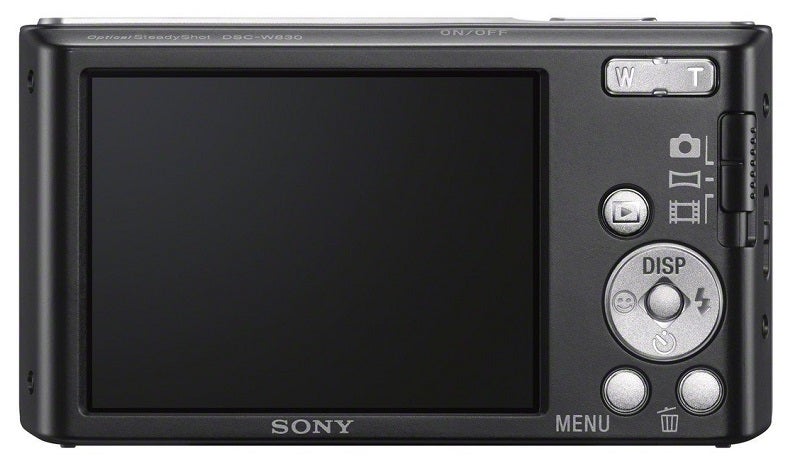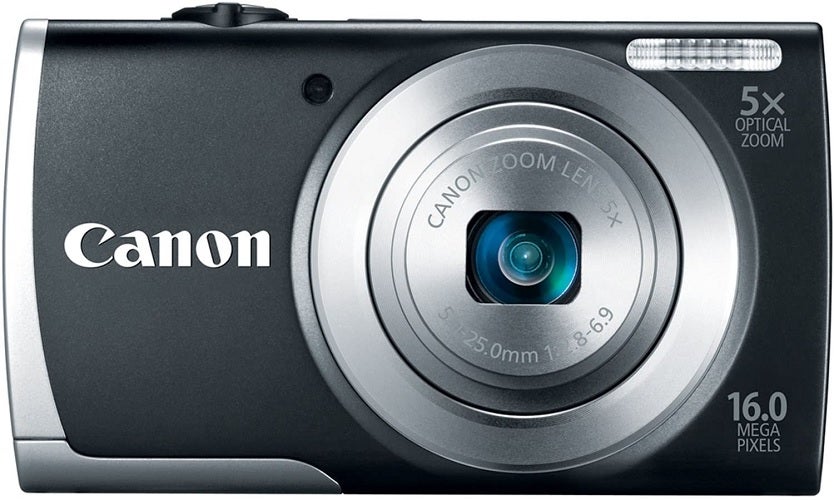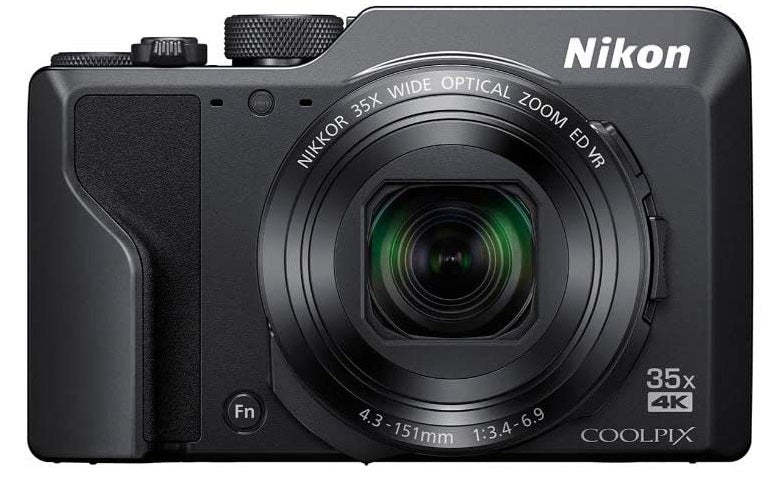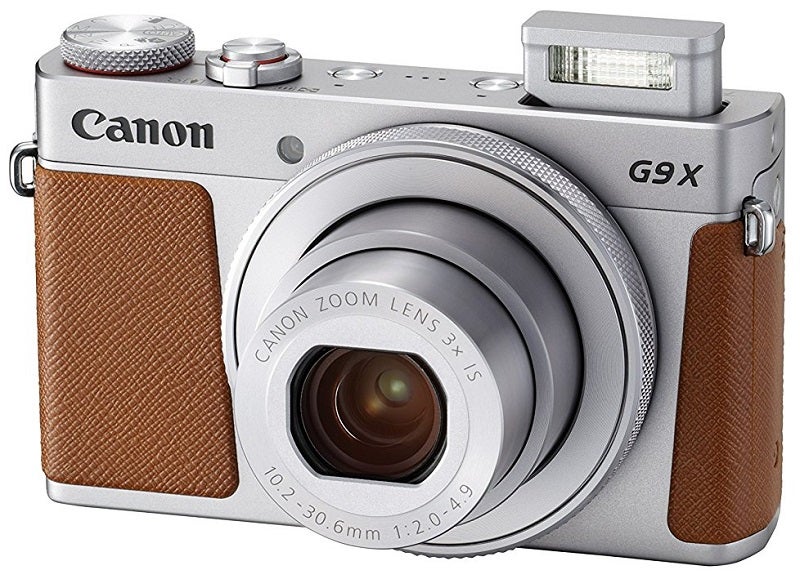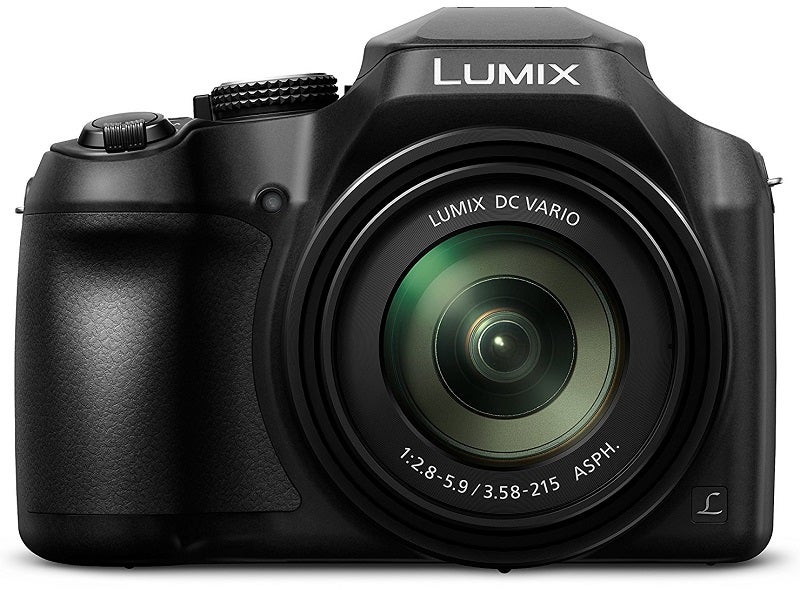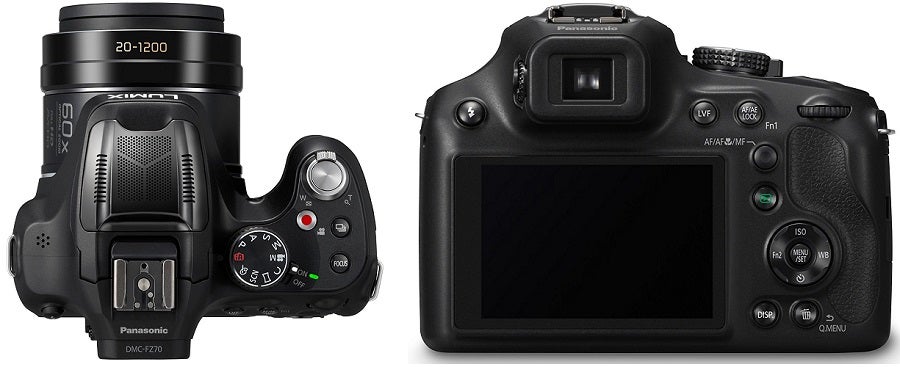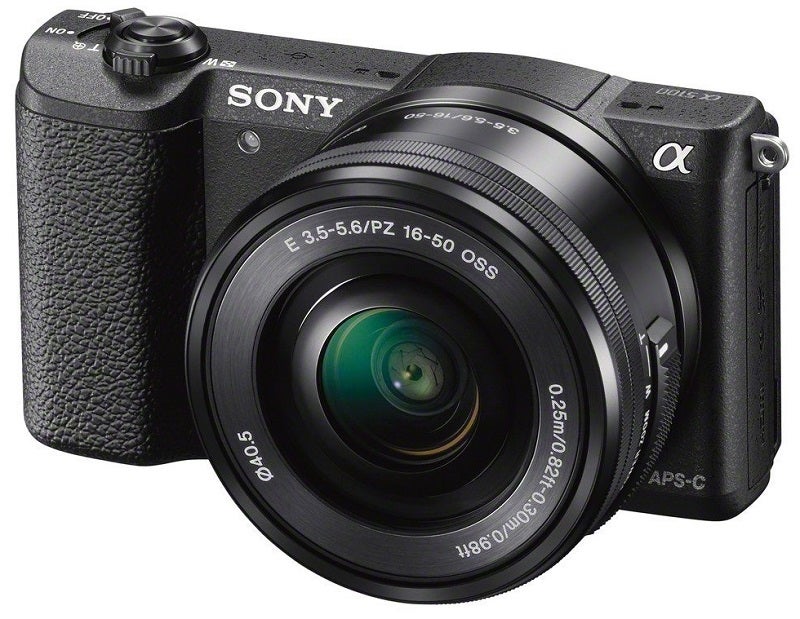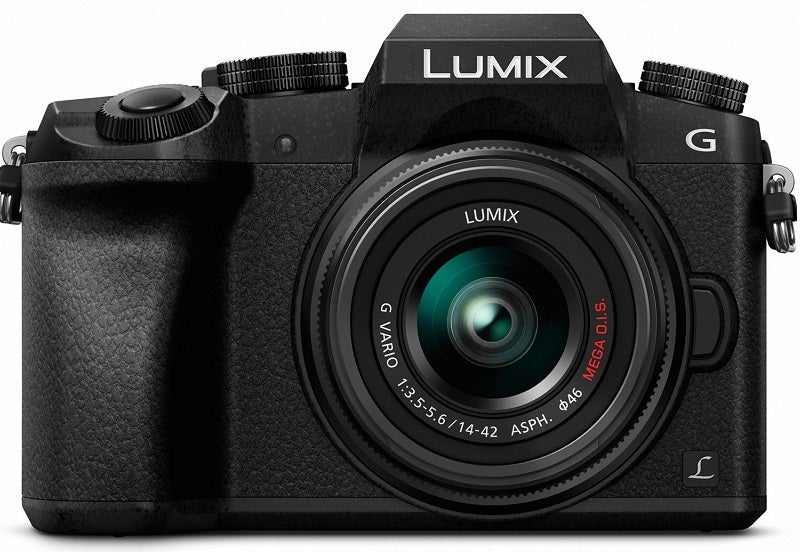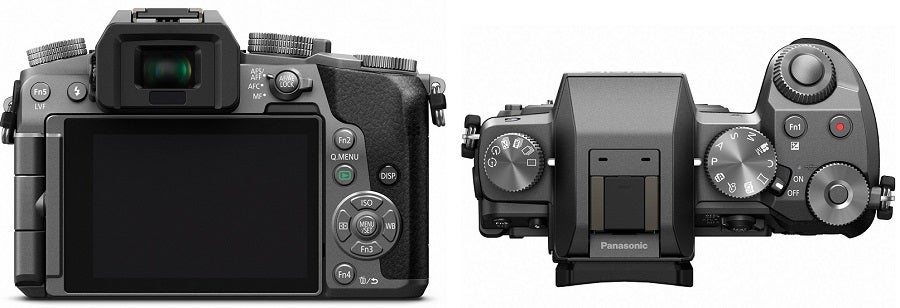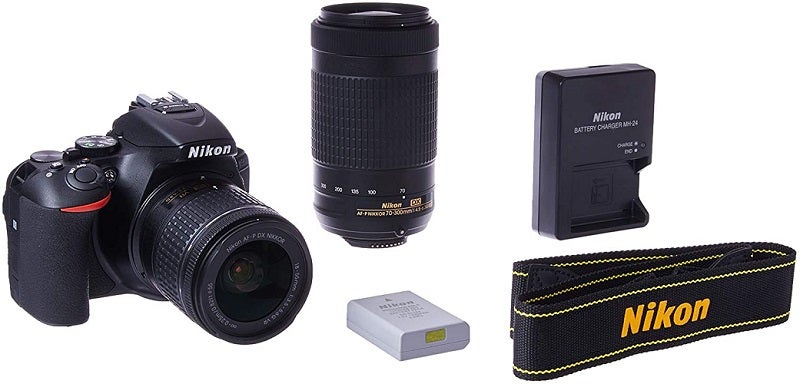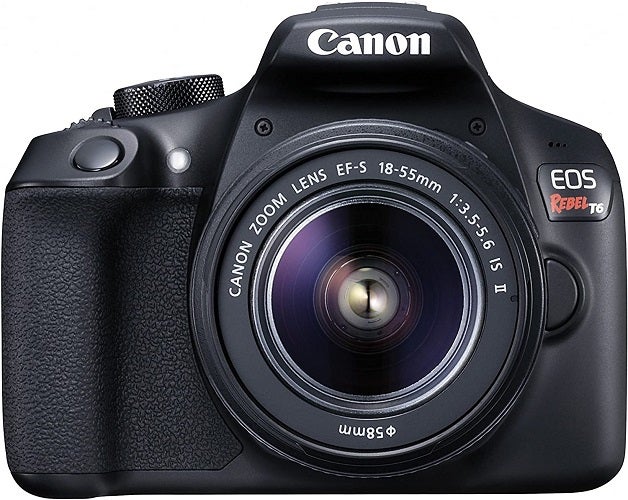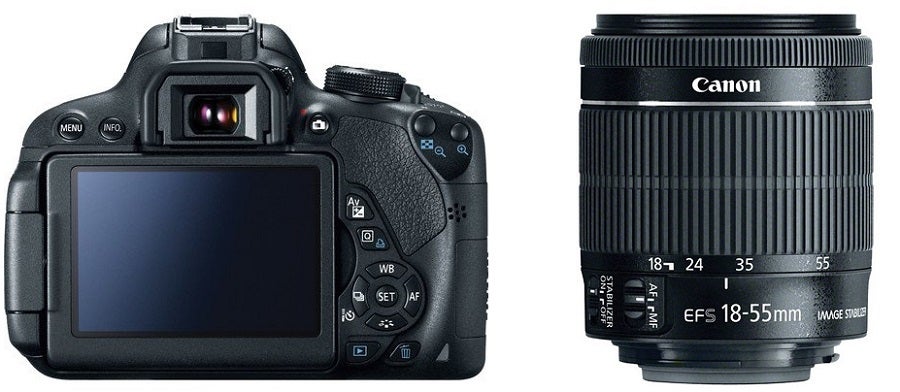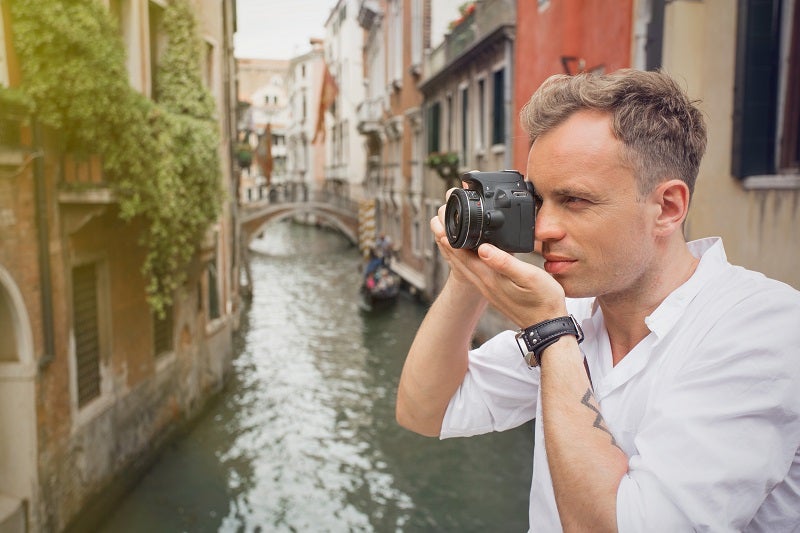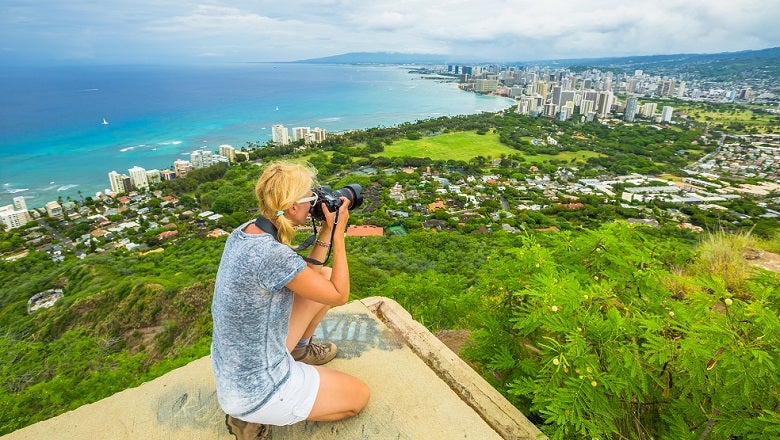
Our Editors independently research, test, and rate what we feel are the best products. We use affiliate links and may receive a small commission on purchases.
Most of us are used to smartphones as our go-to cameras for everyday snapshots and videos. Award-winning photos and even whole movies have been shot with an iPhone.
Yet a dedicated camera is still indispensable, especially for outdoor photography, landscapes, wildlife, and macro shots.
If you’re new to photography and are looking for your first camera, the wide range of available models can be overwhelming.
Should you get a point & shoot or a DSLR?
What’s a mirrorless camera?
We’ll you’re in the right place we’re going to cover these questions and more plus review the top cameras for beginners.
For more of my top camera gear recommendations, have a look through these popular Outside Pursuits guide links: Nature Photography Cameras, Camera Backpacks, Travel Tripods.
Let’s get to it!
Quick Answer: The Best Rated Beginner Cameras
Beginner Point & Shoot Cameras
- Sony DSCW830 20.1MP Digital Camera
- Canon PowerShot A2500 Digital Camera
- Nikon COOLPIX A1000 Digital Camera
- Canon PowerShot G9 X Mark II
- Panasonic Lumix FZ80 Digital Camera
Beginner Mirrorless Cameras
Beginner DSLR Cameras
Our reviews of the top-rated beginner cameras with our buyer’s guide and comparison table will help you choose the right camera for you!
Beginner Camera Reviews
Now let’s take an in depth look at the cameras, we’ll cover beginner point and shoot, mirrorless and DSLR cameras.
Best Point and Shoot Cameras Under $300
#1 Sony DSCW830 20.1MP Digital Camera
- Best For: Snapshots, everyday photography, ultra compact, full auto
- Size & Weight: 3.6″ x 2.07″ x 0.89″, 4.23 oz (with battery)
- Sensor: 20.1 MP, 1/2.3″ size, 5152 x 3864 resolution, ISO 80-3200
- Speed: 1 fps (for up to 100 shots)
- Lens: Zeiss Vario-Tessar Lens f/3.3-6.4, 4.5-36mm, 8x optical zoom, image stabilization
- Video: HD 720p at 30fps, full use of optical zoom
- Extras: 2.7″ TFT LCD, flash built-in, included: battery and charger
The Sony DSCW830 is a budget point-and-shoot camera with a 20.1 megapixel sensor and a Zeiss lens with 8x optical zoom. It’s ultra-compact and features full auto and many scene modes that make photography easy for beginners.
This is a camera you can comfortably fit in your pants or even shirt pocket. The compact dimensions are a minor drawback for people with large hands.
The 2.7” display is adequately bright indoors and outdoors to compose your shot. A built-in flash will support you in less than ideal light conditions. The menu system is straightforward to navigate, and in the so-called Easy Mode, the camera is a true point-and-shoot.
The Sony DSCW830 has a Zeiss 8x optical zoom lens that is quite capable for such a small camera. It performs well in the vast majority of photo situations.
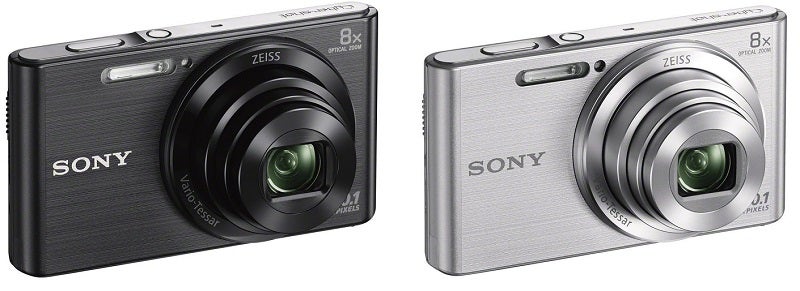
You can go wide angle for panoramic landscapes or group shots, and the telephoto allows you to capture sports or animals. The lens comes with optical stabilization to provide steady images when the camera moves. This SteadyShot cannot be turned off, a minor disadvantage of a point-and-shoot.
The DSCW830 has several shooting modes available. With Intelligent Auto, the camera automatically sets an appropriate scene mode. In Program Auto mode, you get more control over settings while the exposure is still on automatic.
You can select ISO, white balance, focus and metering as well as more subtle options. There are 11 scene modes, a self-timer mode, a 360° panorama mode, and picture effects like toy camera or pop colors.
As is to be expected for a budget point-and-shoot model, the continuous shooting is slow with only 0.8 fps for up to a 100 shots.
When shooting video, you have full use of the optical zoom lens. The Sony DSCW830 records video in HD at 720p with 30 frames per second in fine or standard quality.
Videos are saved with the H.264 codec in MP4 format and are compatible with iMovie and Final Cut Pro X. Two levels of stabilization iron out wobbly shots.
The Sony DSCW830 can take up to 210 shots on a full charge. Battery, charger and USB cable are included, and you also get Sony’s PlayMemories Home software for Windows and Mac to manage and edit photos and videos.
It’s the perfect budget camera if you’re looking for something compact for a point-and-shoot experience.
If you’re looking for a cheaper alternative and want to spend less than $100 on a point-and-shoot camera, the Sony W800/S 20.1MP digital camera is nearly identical but features only a 5x optical zoom. The DSC is the best point and shoot camera under $200!
#2 Canon PowerShot A2500 Digital Camera
- Best For: Snapshots, casual photography, ultra compact, full auto
- Size & Weight: 3.74″ x 2.22″ x 0.84″, 4.97 oz (with battery)
- Sensor: 16 MP, 1/2.3″ size, 4608 x 3456 resolution, ISO 100-1600
- Speed: 1 fps
- Lens: f/2.8-6.9, 5-28mm, 5x optical zoom, image stabilization
- Video: HD 720p at 25fps, no optical zoom
- Extras: 2.7″ TFT LCD, flash built-in, included: battery and charger
The Canon PowerShot A2500 is a small and lightweight point-and-shoot camera with a 5x optical zoom lens and image stabilization. It performs well in daylight for fully automatic snapshots, but low-light photography is a weak point.
Similar to the Sony model above, the compactness of the camera can be challenging for larger hands. The 2.7” display is bright enough for use in the sun to frame your shots.
Canon uses the same size image sensor, which means that image quality varies with the light you have available – the more, the better. Detail and sharpness up to ISO 200 are good enough.

Above that, the camera’s noise reduction softens image drastically. Where this camera excels is color performance: even at higher ISO settings, colors are not shifted. In regular light, colors are bright, vivid and accurate.
The continuous shooting speed stays below 1 frame per second, which is sufficient for casual snapshots. The Canon PowerShot A2500 can record HD video at 720p with 25 fps, but you cannot make use of the optical zoom while filming.
For both photo and video, the camera analyzes the movement and applies the best correction method for best image stabilization. For movies, you can record in Apple’s iFrame movie format for easier imports.
A very practical thing with this beginner camera is the help button, which explains selections and options on the display and even gives you shooting advice. In Smart Auto mode, the camera recognizes the scene type automatically to adjust the settings.
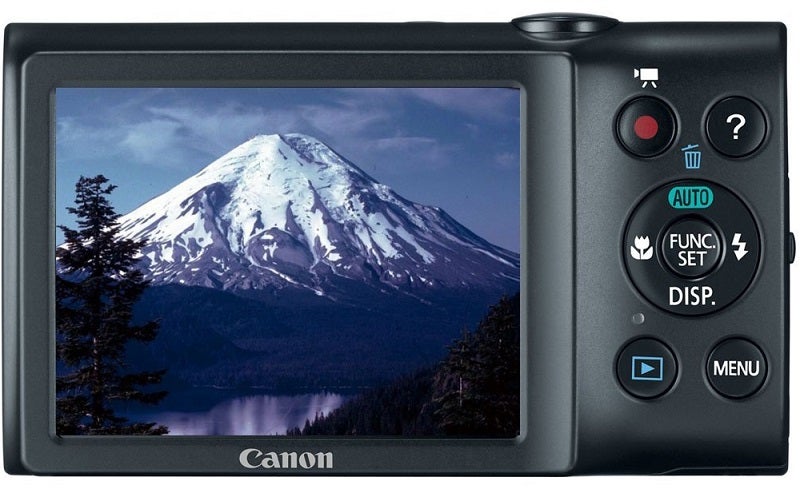 The Program mode give you more control over white balance, ISO and autofocus. With Live View Control, you get a preview on-screen and can adjust settings with sliders. You also have in-camera effects available, such as Fisheye, Miniature, or Toy Camera.
The Program mode give you more control over white balance, ISO and autofocus. With Live View Control, you get a preview on-screen and can adjust settings with sliders. You also have in-camera effects available, such as Fisheye, Miniature, or Toy Camera.
The Canon PowerShot A2500 is available in black, blue, red and silver. On a full charge, you get about 210 shots. Battery and charger are included, and you also get a USB cable, wrist strap, and Canon’s Digital Camera Solution software.
If you want the the best point and shoot camera for travel the PowerShot is a good choice.
#3 Nikon COOLPIX A1000 Compact Digital Camera
- Best For: Snapshots, travel, 4K Ultra HD video, speedy budget compact, zoom
- Size & Weight: 4.4″ x 2.6″ x 1.6″, 10.2 oz (with battery)
- Sensor: 16 MP, 1/2.3″ size, 4608 x 3456 resolution, ISO 125-1600
- Speed: 7 fps (for up to 5 shots)
- Lens: Nikkor ED glass lens, f/3.7-6.4, 4.5-135mm 35x optical zoom, image stabilization
- Video: Full UHD 4K at 30fps, stereo microphone
- Extras: Vari-angle 3″ TFT LCD, built-in flash, Wi-Fi & NFC, GPS, included: battery and charger
The Nikon COOLPIX A1000 is a slim and lightweight beginner camera with a solid build and a surprisingly powerful long zoom range and vari-angle screen under $500.
This camera has the approximate dimensions of a cigarette pack and will comfortably accompany you everywhere. Compared to the two point-and-shoot models above, it is more powerful thanks to a retracting zoom lens with a 35x magnifying power.
This gives you wide-angle and telephoto shooting possibilities, more than adequate for architecture pictures or wildlife. The image sensor is of the same 1/2.3″ size as the previous models with an ISO range of 100 to 6400.
Additional features are Wi-Fi and NFC for easy transfers. Thanks to the built-in GPS, you can geotag images and display your photos on a map. You also get a POI finder and an electronic compass.
The high-resolution 3” display is bright and can be angled, which makes it easy to shoot in different settings. Picture quality is excellent with beautiful colors and natural shades. The automatic white balance works wonders, even in the shade.
Thanks to the high-performance lens, you can capture crisp details. You can choose from several exposure and scene modes, including full auto, of course.
In-camera editing is also available for creative effects and retouching of images. With the free Nikon Wireless Mobile Utility app, you can control the camera with your Android or iOS device.
Video recording is available at up to 4K Ultra HD video, at a maximum of 30 frames per second. The camera includes a stereo microphone and vibration reduction (VR) for blur free shots.
For continuous stills, the camera has a speed of 7 fps, but only for bursts of up to 5 shots. On a full charge, you can take about 300 shots.
All in all, The Nikon COOLPIX A1000 is the best point and shoot camera for low light conditions and offers excellent image quality and travel-friendly features.
Best Compact Digital Cameras For Beginners
#4 Canon PowerShot G9 X Mark II
- Best For: High-performance point-and-shoot, ultra compact, Full HD video
- Size & Weight: 3.9″ x 2.14″ x 0.87″, 7.3 oz (with battery)
- Sensor: 20.1MP, 1″ size, 5472 x 3648 resolution, ISO 125-6400
- Speed: 8.2 fps (for up to 21 shots)
- Lens: f/2-4.9, 10.2-30.6mm, 3x optical zoom, image stabilization
- Video: Full HD 1080p at 60fps
- Extras: 3″ TFT LCD, flash built-in, Wi-Fi, Bluetooth & NFC, included: battery and charger
The Canon PowerShot G9 X Mark II is a highly capable camera in a compact yet durable frame. It features a large image sensor than the previous compact cameras and delivers high-quality pictures.
Despite the camera’s proportions, you can hold it well thanks to a textured grip and a rear thumb rest. The controls are free of clutter, and most settings are controlled via the touch-screen interface.
This will feel very familiar for smartphone users. Buttons on the back give you quick access to movie recording, the main menu or quick features.
The PowerShot G9 X Mark II comes with a fast focus over the entire zoom range, and the performance is well even in low-light conditions. With face detection, tracking mode and a macro mode, maintaining focus is straightforward.
There are presets available for fine-tuning your images, such as landscape or portrait mode. You can create your own effects with the style editor if you want to get creative.
Many more shooting modes are available, and there is also a self-timer. Continuous shots are possible at 8.2 fps for up to 21 shots.
With a 1” 20.1 megapixel sensor, the camera delivers accurate exposures in most lighting conditions. The auto white balances works well with natural and artificial lighting as well as mixed situations.

The pictures are rich in detail with vibrant and saturated colors. With a Digic 7 image processor, the camera is able to significantly reduce noise at higher sensitivity.
The lens is fit for a range of photography but excludes extreme zoom with only a magnifying power of 3x. With image stabilization, your pictures stay blur-free.
The stabilization also works well for video, where you can record while walking, do panning shots or time-lapse movies. Recording capabilities go up to Full HD at 60 frames per second, so you can even do slow motion effects.
For connectivity, this model supports Wi-Fi, bluetooth and NFC, and a companion app is available for iOS and Android.
The Canon PowerShot G9 X Mark II is a highly compact, powerful beginner camera and the best point and shoot camera under $500. Its an excellent value and could easily become your permanent photography companion.
If you want to save a little, a cheaper alternative is the previous version, the slightly slower Canon PowerShot G9 X Digital Camera.
#5 Panasonic Lumix FZ80 Digital Camera
- Best For: High-performance point-and-shoot, multimedia recording, 4K video, long zoom, burst
- Size & Weight: 5.1″ x 3.7″ x 4.7″, 1.36 lbs
- Sensor: 18.1 MP, 1/2.3″ size, 4896 x 3672 resolution, ISO 80-6400
- Speed: 10 fps
- Lens: Lumix DC Vario, f/2.8-5.9, 3.58-215mm, 60x optical zoom, image stabilization
- Video: 4K UHD at 30fps, Full HD 1080p at 60fps, stereo microphone
- Extras: Electronic viewfinder, 3″ TFT LCD, flash built-in & hot shoe, Wi-Fi, included: battery and charger
The Panasonic Lumix FZ80 is an affordable and attractive all-in-one beginner camera. It combines easy use with advanced features and video recording capabilities up to 4K UHD.
This model is only a little more expensive than an entry-level camera, but it comes with a powerful zoom lens on a compact body and controls in the style of a DSLR camera.
The 60x optical zoom gives you a broad focal range for getting up close or taking wide angle shots. The image sensor features less than 20 megapixels, which is wise choice in relation to its size.
With a narrower ISO range, the performance in low light conditions is good. For steady shots, you can rely on the image stabilization feature.
To compose your shots, you can use both the 3” display or the electronic viewfinder. In the dedicated macro mode, you can get as close as 0.4” to your subject.
With the panorama mode, the camera takes seamless and stunning panoramic imagery and wide-field views. You can use many more creative control modes, such as portrait, retro, toy, pop, miniature and night time shots.
The autofocus is fast for continuous shooting and movies. You can also control the focus manually with the touch-to-focus feature.
The Lumix FZ80 gives you a continuous shooting rate of 10 frames per second. Thanks to 4K UHD video capabilities, you can also record stills at 30fps by cropping them out of the video.
Three different burst modes make sure you won’t miss the perfect shot. 4K UHD video can be captured at 30 fps, while Full HD gives you a frame rate of 60 fps and regular HD is possible at up to 120 fps, enabling you to capture slow motion videos.
With post focus, you can record and later shift the focus point around. Focus stacking allows you to take pictures with a shifting focus in sequence.
With the built-in WiFi, transferring images is a breeze, and you can also pair a smartphone for remote controlling the camera. When using the display the battery will last for around 330 shots, or 240 shots with the electronic viewfinder.
All in all, the Panasonic Lumix FZ80 is the best point and shoot camera for video and a highly versatile beginner camera.
Best Mirrorless Beginner Cameras
#6 Sony a6000 Mirrorless Digital Camera
- Best For: Compact high-performance photography, travel, video
- Size & Weight: 2.47″ x 4.32″ x 1.41″, 7.9 oz (with battery)
- Sensor: 24.3 MP, 23.5 x 15.6mm size, APS-C, 6000 x 4000 resolution, ISO 100-25000
- Speed: 11 fps
- Lens: SELP1650, f/3.5-5.6, 16-50mm, 3x optical zoom, image stabilization
- Video: Full HD 1080p at 60fps, stereo microphone
- Extras: Tilt-able 3″ TFT LCD, flash built-in, WiFi & NFC, companion app, included: battery and charger
If your looking for the best beginner mirrorless camera, the Sony a6000 is sleek and compact that is well suited for beginners. It allows you to gradually learn photography and expand your skills over time.
The 3” touch-screen is the central element for controlling the camera and composing your shots. You can tilt it upwards as far as 180° for easier viewing or front-facing angles.
With seven customizable buttons, you can program your favorite modes and settings. You can make use of the full auto mode and select scenes such as landscape, macro, portrait, sports action, sunset, sweep panorama or timer.
The camera features the Sony E lens mount and includes a kit lens with 16mm to 50mm focal length and optical image stabilization for blur-free shots. The lens is well-suited for everyday photography and video.
Sony uses a 24.3 megapixel APS-C sensor for the a6000 for high resolution images with great detail, true colors and minimal noise in low light situations.
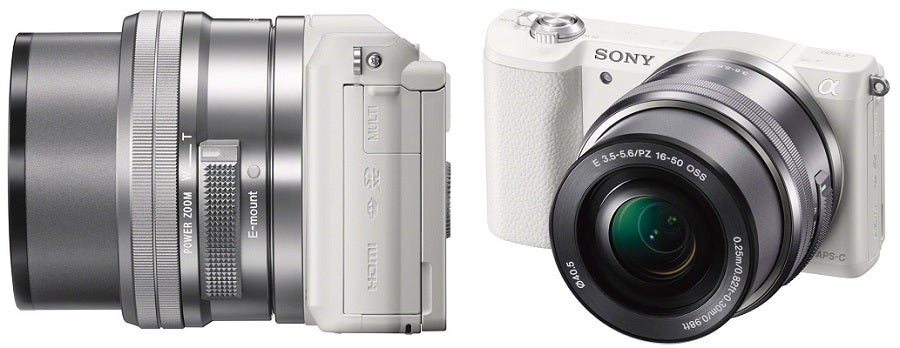
A fast image processor delivers speedy results. The camera comes with a continuous shooting mode at 6 frames per second and a fast autofocus.
You can record video in Full HD at 60 frames per second, so you can create slow motion effects or time-lapse videos. The camera has a built-in stereo microphone. Transferring images is easy with the WiFi capability.
The Sony a6000 is available in black and white and can take up to around 400 shots on a single charge. A smartphone companion app is available for remote control and viewfinder options.
It offers speed and versatility as well as apt video recording within a compact form factor. It’s the best mirrorless camera under $500 you can grow into.
#7 PANASONIC LUMIX G7 4K Mirrorless Camera
- Best For: Interchangeable lens versatility, fast autofocus, advanced stills, burst, video
- Size & Weight: 2.47″ x 4.32″ x 1.41″, 7.9 oz (with battery)
- Sensor: 16 MP, 17.3 x 13mm size, 4592 x 3448 resolution, ISO 200-25600
- Speed: 8 fps
- Lens: Lumix G Vario, f/3.5-5.6, 14-140mm, 10x optical zoom, image stabilization
- Video: 4K UHD at 30fps Full HD 1080p at 60fps, stereo microphone
- Extras: Electronic viewfinder, free-angle 3″ TFT LCD, flash built-in & hot shoe, WiFi, included: battery, charger, USB cable, shoulder strap, cap, lens bag
The Panasonic Lumix G7 is a sleek mirrorless camera great for beginners. It features physical dials for key settings while also giving you a full auto mode.
You have both a free-angle LCD as well as an electronic viewfinder for best versatility. With WiFi connectivity, you can easily share images or link a mobile device for enhanced control features.
The interchangeable lens camera uses the Micro Four Thirds mount for best compatibility with a wide array of different lenses. Already included is the Lumix G Vario lens, which has a focal length of 14mm to 42mm with optical image stabilization.
The lens covers wide-angle to short telephoto perspectives. Clarity and sharpness across the zoom range. Thanks to aspherical elements, the lens design is compact for reduced size and weight.
Thanks to a fast autofocus system, the Lumix G7 shoots sharp images. The 16 megapixel sensor is not fully APS-C sized, but can deal with many lighting conditions and delivers consistent results.
The camera has various burst modes for shooting at up to 8 frames per second. With video burst mode, up to 30 fps are possible or even up to 40 fps with the electronic shutter. Noise reduction keeps images clean and natural with minimal blur.
An electronic level gauge helps you take level shots. In HDR mode, you get great highlights and shadows. A panorama mode is available, as are various photo styles for landscape or portrait photography and other effects.
Video recording is supported in 4K UHD at 30 fps, and in Full HD, you can even shoot at 60 fps. The built-in microphone records in stereo, and you can connect an external one.
The Panasonic Lumix G7 is the best mirrorless camera under $1000 that eases beginners into photography and enables you to unlock more and more features as you learn advanced techniques.
Best Beginner DSLR Cameras
#8 Nikon D5600 Digital SLR Camera Kit
- Best For: Entry-level DSLR photography, guide mode, ease of use, durability
- Size & Weight: 4.9″ x 3.9″ x 3″, 14.5 oz (with battery)
- Sensor: 24.2 MP, 23.5 x 16.6 mm size, APS-C, 6000 x 4000 resolution, ISO 100-12800
- Speed: 5 fps (up to 100 shots)
- Lens: AF-S DX NIKKOR, f/3.5-5.6G, 18-55mm, 3x optical zoom, image stabilization & AF-P DX NIKKOR 70-300mm f/4.5-6.3G ED
- Video: Full HD 1080p at 60fps, mono microphone
- Extras: 3″ TFT LCD, flash built-in & hot shoe, included: battery and charger
The Nikon D5600 is a great entry-level DSLR that caters to beginners with a special guide mode. It delivers high-quality pictures thanks to an APS-C sensor with high pixel count.
It’s easy to use, you get an impressive battery life and can make use of a full array of accessories and two lenses.
The D5600 comes with a high-resolution 24.2 megapixel APS-C image sensor that does not use a low-pass filter, which means it captures everything in great detail.
The native ISO range is 100 to 25,600, giving you enough flexibility for difficult lighting conditions. The sensor is paired with the EXPEED 4 image processor for speed. You can shoot at 5 frames per second for a burst of 100 shots.
This kit included a AF-P DX NIKKOR f/3.5-5.6G V zoom lens with 3x optical zoom and vibration reduction for stable images. The focal length of 18mm to 55mm gives you a good range but excludes extreme telephoto zoom.
Also included is a AF-P DX NIKKOR 70-300mm f/4.5-6.3G ED telephoto lens. The camera uses the Nikon F bayonet mount, which gives you access to a wide range of compatible lenses.
The images are highly detailed with little noise. The camera uses a very soft image smoothing that does not pose a problem in print. Thanks to the sensor, you can generously crop images.
To compose your shot, you can use the optical viewfinder or a Live View on the 3” LCD, which is non-touch. The camera offers special effect, such as pop colors, toy camera, or easy panorama.
Video recording capabilities reach Full HD at a maximum of 60 frames per second. The Nikon D5600 provides fast autofocus across most light conditions with hardly a false positive. The subject tracking performs very well for an entry-level DSLR.
The camera has a small and lightweight body which is durable thanks to a polycarbonate construction. You can comfortably hold the D5600 due to its grip and textured surface. Handling is easy with few buttons and on-screen menus.
The Nikon D5600 is the best DSLR camera under $700. Its a reliable and high-performance DSLR that is easy and straightforward for beginners to take good pictures.
#9 Canon EOS Rebel T6 Digital SLR Camera Kit
The Canon EOS Rebel T6 is an entry-level DSLR camera with sharp and detailed images, accurate colors and low noise. It performs and focuses fast with good autofocus both in Live View and with the viewfinder. This is a full kit with a total of three lenses and a wide range of accessories to get you started with professional photography. With an APS-C sensor and DIGIC 5 image processor, the camera delivers high resolution 18 megapixel images at a 5 fps continuous rate if needed. You can use the optical viewfinder or the vari-angle 3” touch LCD, which you can use for touch focus if you want to go beyond autofocus. You can record video in Full HD at a rate of up to 30 fps. With 60 fps in regular HD, slow motion effects become possible. Thanks to a stereo microphone, high quality videos are no problem. The camera has an intelligent Scene Auto Mode, which is great for beginners and delivers optimal adjustments based on automatic detection. Especially in difficult lighting conditions, the camera helps you find the best possible exposure. A range of night scenes are available as well as creative filters such as soft focus, toy camera, fisheye or miniature. The standard lens included is the EF-S 18-55mm lens with a 3x optical zoom and image stabilization for blur-free pictures. The focal range includes standard and wide-angle. Its minimum focus is 9.8”. The Canon EOS Rebel T6 is one of the best DSLR cameras to get beginners started with photography at an amazing price. From the first shot, you can take impressive pictures and build your skills from the ground up. A higher-priced alternative is the next model up, Canon EOS Rebel T7, which delivers faster speed and more performance.
How to Choose the Best Beginner Camera – Buyers Guide
- Choosing the Right Beginner Camera
- Price
- Type of Camera
- Compactness
- Sensor
- Speed
- Lenses
- Video
- Shooting Modes
- Best Beginner Camera Brands
- FAQs: About Beginner Cameras
- Final Thoughts
Choosing the Right Beginner Camera
Beginner cameras are models that cater to photography newbies. When you’re acquiring your first skills, you don’t necessarily need a high-end camera with lots of features.
Compact cameras offer lots of modes for automatic settings, which makes taking pictures as simple as pushing a button. For many hobby photographers, that’s sufficient.
We’ve reviewed budget point-and-shoot cameras, which offer an inexpensive option with compact dimensions that you can basically bring anywhere. Higher-quality compact cameras offer more resolution and better optics.
If you eventually want to progress from mere beginner without having to upgrade your camera straight away, we’ve also reviewed mirrorless and DSLR cameras.
These allow you to also get different lenses and feature larger image sensors for higher-quality pictures. DSLR models offer an optical viewfinder but are more bulky, whereas mirrorless cameras are more compact.
Price
When getting your first camera as a beginner, you might have an idea on how much you want to spend, yet you have no idea of what to expect for that price.
The good news is that you don’t have to spend a fortune to take up photography!
Our top selection starts at the lower end of the spectrum and goes up to the more expensive DSLRs. When considering a mirrorless or DSLR model, keep in mind that part of your budget can go to an additional lens in the future.
The good thing about interchangeable lens cameras is that you will be able to use your lenses in the future if you upgrade the camera to a higher-grade model of the same brand.
Type of Camera
Your needs will determine what type of camera is best for you. We’ve selected models from four categories: budget point-and-shoot cameras, high-quality compact cameras, mirrorless interchangeable lens cameras, and DSLRs.

Budget Point-and-Shoot Cameras
These are affordable and pocket-sized shooters with simple controls, ideal for quick snapshots, casual photography and everyday situations.
High-quality Compact Cameras
Still compact, these models feature a slightly larger image sensor and better optics for higher quality pictures. In this category, a 1” sized sensor is common.
Some cameras feature telephoto zoom lenses with a factor around 30x, while others give you more of a middle ground with a 16x optical zoom.
Mirrorless Interchangeable Lens Cameras
For a higher price tag, these cameras give you faster performance and even higher image quality thanks to an APS-C sensor. Mirrorless means that there is no optical viewfinder.
To preview the shot, you use the camera’s display or an electronic viewfinder. This allows for a more compact construction. While you can change the lens for another compatible one, mirrorless cameras offer fewer lens options.
DSLR Cameras
These come with an optical viewfinder, which automatically introduces more bulk. Yet it’s also an advantage: if you’re serious about learning photography, it’s the way to go.
You’ll have a clear view of your subject in any lighting conditions without image lag. Because you won’t be working so much with a display, battery life is greatly improved.
In general, autofocus performance also tends to be better for DSLR models. As for lenses, it’s easier to build a collection of DSLR compatible lenses that you can use with more than one camera.
Compactness
For many beginners, size and weight are a big issue. DSLR cameras have the downside of bulk. If you’re not yet in the habit of bringing a camera everywhere you go, a model with some heft to it might not be ideal for you since you’ll often leave it behind.
Point-and-shoot cameras have the great advantage that you can slip them into nearly any pocket and have them ready quickly. Mirrorless models are a middle ground: they are more compact than DSLRs.
Sensor
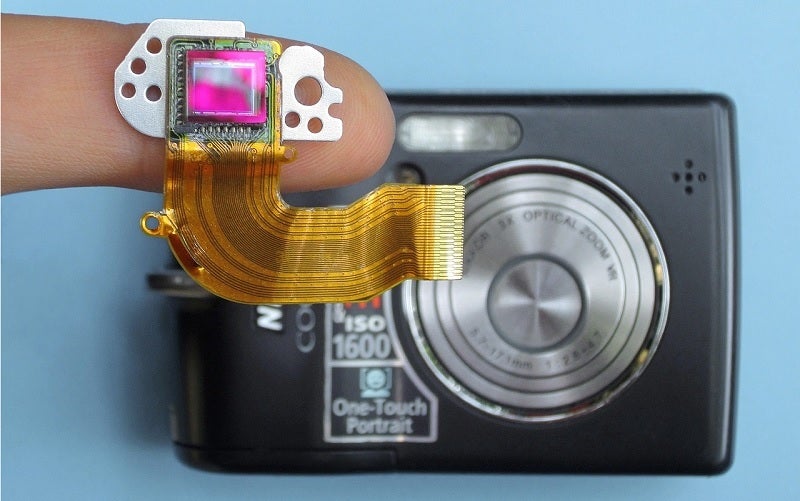
Digital cameras replaced photographic film with a sensor. This element influences image quality and determines resolution and light sensitivity (ISO rating, or film speed).
Camera manufacturers proudly display the megapixel count, such as 20MP. In short, it’s true that more is better, but that is not all that matters.
A high resolution is important if you want to crop, enlarge and print images later. Yet the size of the image sensor is also important. You might find that a cheap point-and-shoot and a DSLR camera both have around 20MP, but the smaller camera will also use a much smaller sensor.
This means that individual pixels on the smaller sensor are also smaller. In low-light situations, this results in a much higher noise ratio and therefore grainier pictures. With a larger sensor, there is less light bleed from one pixel to the next.
In our selection, the budget point-and-shoot cameras feature the smallest sensors, whereas the higher-priced compact models have sensors around 1” in size. The mirrorless and DSLR cameras come with an APS-C sized sensor.
Compared to a full frame model, these sensors are still cropped, yet they’re a good balance between image quality and price. A full frame sensor is equivalent to shooting 35mm film, but makes for a more expensive and bulkier camera.
In addition, you need lenses that fit the sensor, which are also more costly. For beginners, the sensor sizes below full frame are absolutely sufficient.
Speed
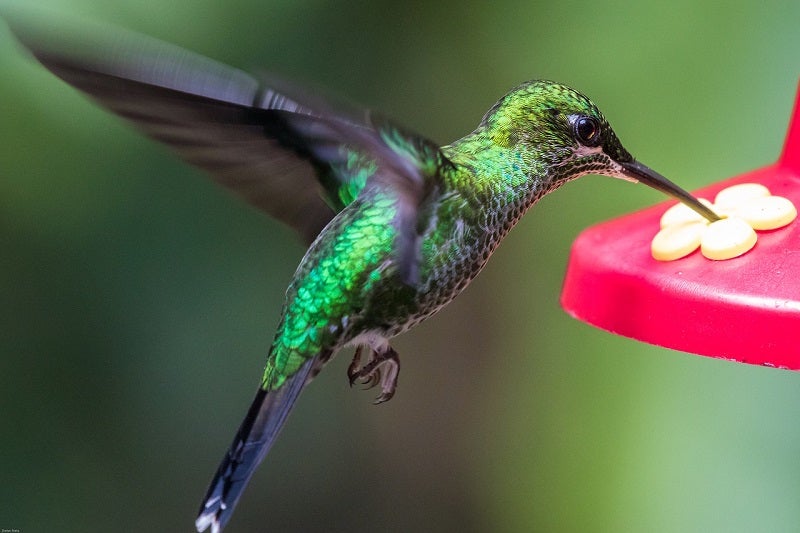
Camera speed becomes important when you want to capture the perfect moment and need to shoot in quick succession.
How soon a model is ready for the next photo depends on many factors, such as shutter speed, autofocus, memory buffer, read and write speed to the memory card, as well as individual settings.
If a camera has a continuous mode, you’re able to hold down the shutter release button and it will keep on shooting pictures at a certain rate. In this burst mode, compact cameras average around one frame per second.
Mirrorless and DSLR cameras can go faster from around 5 fps to 10 fps and more. A faster burst speed increases your chances of catching that elusive shot.
Lenses
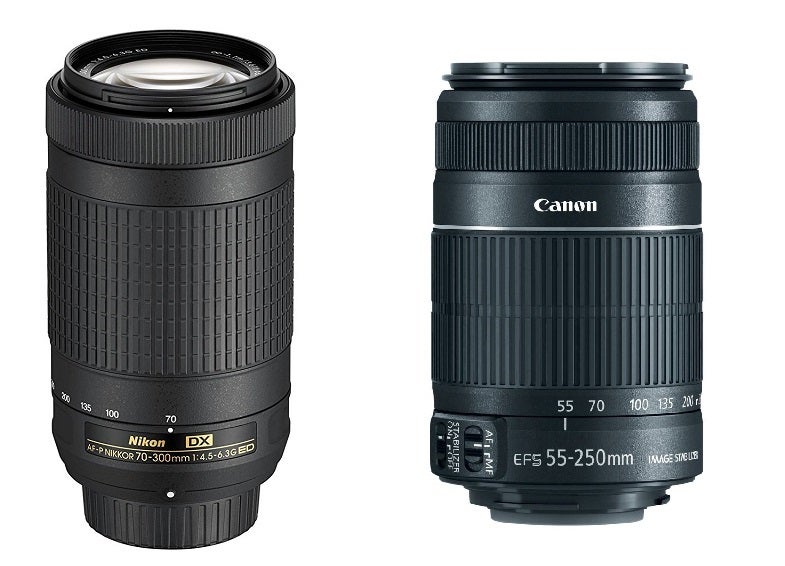
While compact cameras often feature a telephoto zoom lens with 20x to 30x magnifying power, interchangeable lens models come with a model that has a much lower focal length, often resulting in an optical zoom of 3x.
A standard lens is a 18mm to 55mm lens. Wide-angle, telephoto and super telephoto as well as macro lenses are special models for specific purposes. Mirrorless and DSLR cameras offer higher quality lenses with better glass than point-and-shoot cameras.
In order for a lens to fit an interchangeable lens camera, it must be compatible with the sensor and the lens mount. Mirrorless cameras often use the Micro-Four-Thirds standard, or MFT for short.
It’s tempting to get a one-size-fits-all zoom lens with a large range of focal lengths and be done with the topic of lenses, but these models have some limitations: they’re usually not suited for close-up photography, they can under-perform in low-light situations, and they can be less sharp than models with a smaller focal length.
Some Lenses to Consider
Before we recommend some different lenses for interchangeable lens cameras, a little bit of optics. As we’ve noted, the mirrorless and DSLR models in our selection feature APS-C sensors.
Compared to 35mm film photography or a full frame sensor, they are roughly 2/3 in size. The aspect ratio results in a wider field of view. The magnification is about equal to 1.5x.
This enables you to use lenses with a smaller focal length on APS-C cameras with the same result as a larger focal length on a full frame or 35mm camera. The advantage: these lenses are smaller and cheaper.
35mm
A so-called fixed or prime lens has no moving parts and therefore does not zoom, which means it’s light and compact and takes sharp images.
50mm is a standard choice for a fixed lens, but because of the 1.5x magnifying factor, a 35mm lens is sufficient for the models we’ve reviewed.
- Sony: E-mount Interchangeable Lens Sonnar T Fe 35mm F2.8
- Panasonic: Lumix G Macro Lens 30mm F2.8 or Rokinon 35mm F1.4 AS UMC Fixed Lens
- Nikon: AF-S DX NIKKOR 35mm f/1.8G Lens
- Canon: EF 35mm f/2 IS USM
Portrait Photography
A short telephoto lens with a large aperture enables you to take pictures of your subject with a soft, out-of-focus background for flattering images.
- Sony: SEL85F18 85mm F/1.8-22 Medium Telephoto Lens
- Panasonic / Sony (MFT): Rokinon 85M-MFT 85mm F1.4
- Nikon: AF FX NIKKOR 85mm f/1.8G
- Canon: EF 85mm f/1.8 USM Medium Telephoto Lens
Landscapes
You’ll need a wider angle, which for an APS-C camera is a range of 10-24mm. That way, you can take impressive views where things close-by appear slightly larger and the background comparatively smaller.
- Sony: SEL1018 10-18mm Wide-Angle Zoom Lens or Rokinon 12mm F2.0 NCS CS Ultra Wide Angle
- Panasonic: Rokinon 12mm F2.0 NCS CS Ultra Wide Angle
- Nikon: Sigma 10-20mm f/3.5 EX DC HSM ELD SLD Aspherical Super Wide Angle Lens
- Canon: Sigma 10-20mm f/3.5 EX DC HSM ELD SLD Aspherical Super Wide Angle Lens
Sports & Wildlife
A long telephoto lens with large apertures allows you to take rapid action shots with a fast shutter and large aperture. These lenses are expensive, especially in the range of 200-400mm with an f/2.8 aperture.
Similar to sports photography, you often cannot get close to your subject and therefore need a good telephoto lens of 300mm or longer. This is where the magnifying factor of your APS-C camera is nifty: a 300mm focal length becomes 450mm!
- Sony: SEL70200G 70-200mm f/4.0 G OSS E Mount Lens and Rokinon 300M-E-BK 300mm F6.3 Mirror Lens
- Panasonic: Lumix G II Vario Lens 100-300mm MFT
- Nikon: AF-S FX NIKKOR 300MM f/4E PF ED Vibration Reduction Lens with Autofocus and AF-S FX NIKKOR 200-400mm f/4G ED Vibration Reduction II Zoom Lens with Auto Focus
- Canon: EF 300mm f/4L IS USM Telephoto Fixed Lens and Canon EF 400mm f/5.6L USM Super Telephoto Lens
Macro photography
You need a close focus lens with at least a life size representation of your subject. Most manufacturers offer hybrid macro lenses which also work well for portrait photography.
- Sony: SEL30M35 30mm f/3.5 e-mount Macro Fixed Lens or SEL90M28G FE 90mm f/2.8-22 Macro G OSS
- Panasonic: Panasonic Lumix G Macro Lens 30mm F2.8 ASPH. MFT or Panasonic Lumix G DG Macro-Elmar Lens 45MM F2.8 ASPH. MFT
- Nikon: AF-S FX Micro-NIKKOR 2177 60mm f/2.8G ED Standard Macro Lens
- Canon: EF 100mm f/2.8L IS USM Macro Lens
Video
For casual videos, any of the cameras we’ve reviewed will do. If you’re serious about video and primarily want to record moving pictures, consider at least a mirrorless or DSLR model.
The option of interchangeable lenses gives you creative freedom later on. A fast autofocus and good video stabilization are also important for videographers. In addition, you might want the ability to connect an external microphone.
Shooting Modes
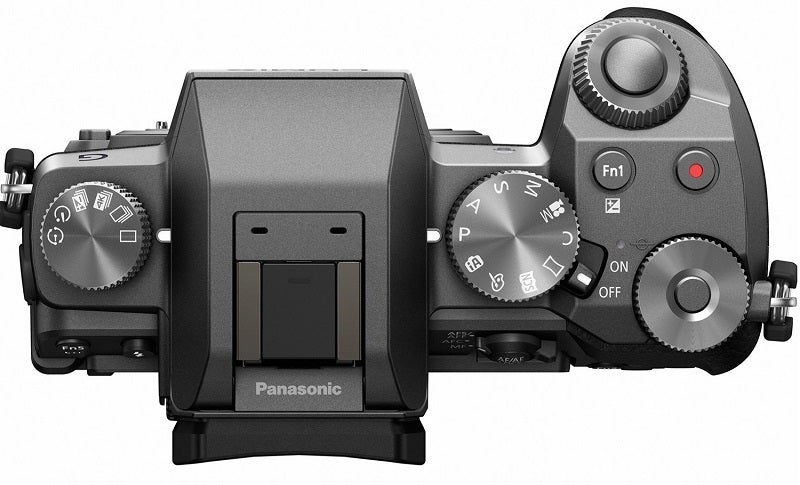
The idea of a beginner camera is also that you don’t need to be fully versed in knowledge of photography. Especially point-and-shoot models offer different shooting modes which automatically tweak the settings for you.
In a nutshell, these are all variations of the same basic fully automatic mode, which adjusts aperture, shutter speed and ISO for you. The more skilled you become, the more you’ll want to exert at least some influence over these and manually adjust the settings.
Even up to DSLR models, cameras still come with auto modes. As a general rule, the basic point-and-shoot cameras are less versatile in terms of manually setting up things.
Best Camera Brands
 Nikon, Canon, Pentax, Olympus, Sony and Fujifilm are all popular and renowned camera manufacturers.
Nikon, Canon, Pentax, Olympus, Sony and Fujifilm are all popular and renowned camera manufacturers.
If a camera fits your needs, brand is less important – but for the mirrorless and DSLR models, you need to pay more attention. That is because with getting a certain brand model, you buy into the manufacturer’s eco-system.
Canon lenses work best with Canon cameras, Nikon lenses are compatible with Nikon cameras. The same goes for flashes and other accessories.
There are adapters to use lenses across brands, but in order to access all autofocus features at full speed, it’s best to match the brand of camera and lens.
Tips on Getting Started With Photography
Extras
These features should not primarily influence your decision, but are worth looking at. WiFi connectivity allows you to wirelessly transfer images or even pair the camera with a companion app for your smartphone or tablet for additional features.
With a flash shoe, you can connect an external flash. Some photographers prefer a large screen for composing and reviewing shots. If you’re recording video, perhaps you want to connect an external microphone.
We’ve also tried to list the accessories for each model here.
FAQs About Beginner Cameras
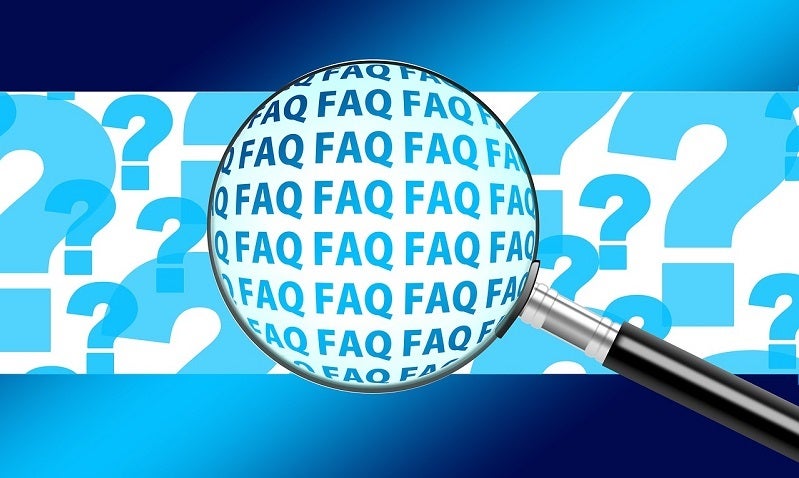
Q: What is a beginner camera?
A: The top models we’ve reviewed above are all digital cameras for beginners. These are our recommendations across different categories for photographic newbies who are buying their first camera to get started with digital photography.
These beginner cameras tend to be at the lower end of the price range to make the entry less costly, and they’re also particularly suitable for amateur photographers.
Everyone has different needs, whether they just want to be able to snap great pictures as easy as pushing one button, or they want to get started on becoming a photography pro.
This is why we’ve divided our selection into the four different categories: budget point-and-shoot cameras, higher-end compact cameras, mirrorless cameras, and DSLR cameras.
Q: What type of camera is best for me?
A: There are three types of digital cameras: point-and-shoot, mirrorless, and digital SLRs. For the purpose of our review, we’ve further separated the point-and-shoot models into budget options and higher-priced compact cameras.
If you don’t want to spend much and want a camera that just works for snapshots, a cheap point-and-shoot will do. The high-quality models of compact cameras give you better optics and more control through manual settings, but you’re stuck with the lens that comes with the camera.
Both DSLR and mirrorless cameras feature larger sensors for better image quality, and they give you the option to use different lenses. Mirrorless models have the advantage that they don’t use an optical viewfinder, making them more compact.
A drawback is that fewer lens models are available.
Q: I just want a camera – do I have to worry about lenses?
A: The lens is the optics part of any camera and is absolutely necessary for taking pictures.
Different lenses change the creative possibilities in photography, so when you have the ability to change out the lens on a camera, you’re more flexible in your approach and have a more versatile model.
Point-and-shoot cameras have a fixed lens which you cannot swap. Most of them try to deliver many shooting options with lenses that are suitable for many situations, but effectively, this means they can’t excel.
Higher-priced compact cameras have improved optics paired with larger sensors to deliver quality pictures. If you want to pick a beginner camera that allows you to further develop your photography later on and try out different lenses, you need an interchangeable lens model, that is a mirrorless or DSLR camera.
Q: What is the difference between optical and digital zoom?
A: You will see the zoom specification mostly for compact digital cameras. The optical zoom refers to the camera’s optics, the lens. Depending on the focal length, you can enlarge things at a distance.
The digital zoom simply crops out a portion of the image, then enlarges it – similarly to what you can do in post-processing, for example in an image editor such as Photoshop.
This degrades the image quality. The application of digital zoom is rarely useful; camera manufacturers specify it mainly for marketing reasons.
Q: Do I need a professional / expensive camera to be a good photographer?
A: In short: no. Or, the other way round, an expensive or “professional” camera does not automatically make you a photography pro. If a professional photographer handed you their camera, would your pictures look as good as theirs?
Most likely not. So it’s not the gear, it’s you. The easiest way to improve your pictures is to improve your photography skills, regardless of what equipment you use.
Q: How can I learn more about photography?
A: If you can press a button, you can take great pictures – this is Jim Miotke’s approach in BetterPhoto Basics: The Absolute Beginner’s Guide to Taking Photos Like a Pro.
This book has tips and tricks on how to improve your photography right away, no matter which camera you own. The popular Understanding Exposure: How to Shoot Great Photographs with Any Camera by Bryan Peterson explains the fundamentals of exposure in photography, dealing with light, aperture and shutter settings.
If you’re primarily interested in recording videos, have a look at Steve Stockman’ How to Shoot Video That Doesn’t Suck: Advice to Make Any Amateur Look Like a Pro.
It deals with the question “How do you shoot a video somebody else will want to watch?” and provides a quick and easy guide that will make your video better instantly, regardless of equipment.
Q: Cannon vs Nikon, which is better?
A: This like to old Coke vs Pepsi argument. Nikon cameras are preferred by most professional photographers and many say the sensor quality is slightly better. Cannon cameras usually come with more megapixels, this doesn’t mean better pictures but does allow for the ability to zoom in more without losing resolution. Honestly it would be hard to go wrong with either brand!
Q: How many megapixels do I need for a good picture?
A: It is generally agreed on the 300 pixels per square inch gives a sufficiently good picture at a standard 6x4 picture size, this equates to about 7 megapixels. You would be hard pressed to find any camera sold with a lower megapixels resolution. The only factor would be how much do you want to enlarge them without the picture becoming to “grainy”. Anything over 15 megapixels should be fine.
Q: What other equipment do I need?
A: If your camera does not include the memory card, pay attention to the maximum possible storage size and get a high-class one for fast and reliable storage.
Mirrorless and DSLR cameras sometimes have two card slots. Depending on the model, a USB cable for picture transfer might or might not be included. Some photographers prefer a dedicated memory card reader.
In our guide above, we’ve made some recommendations for lenses. Depending on where and what you shoot, a tripod or monopod will stabilize your pictures. If you travel with a DSLR with lenses, a camera backpack will keep your equipment safe.
Final Thoughts
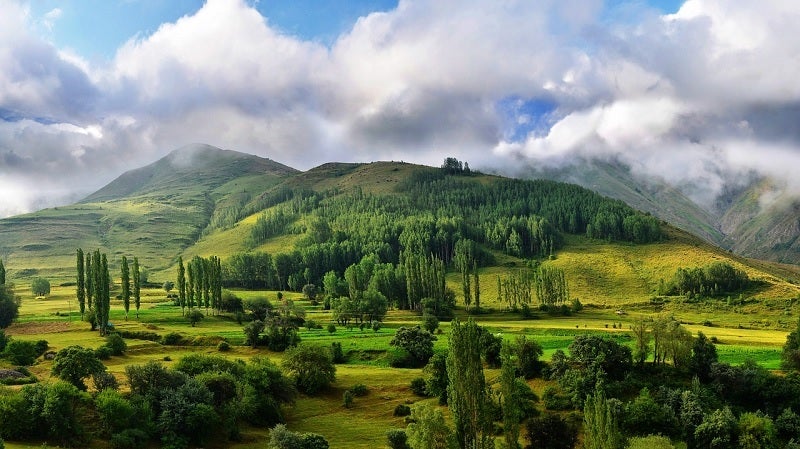
As you can see, beginner cameras absolutely don’t need to be expensive. On a limited budget, you can get features such as zoom, high quality video and continuous shooting that a smartphone camera does not offer.
For a little more, high-quality compact cameras come with a larger image sensor for more light sensitivity and higher resolution. If you need a faster model and probably want to develop your photography later on, consider purchasing a mirrorless or DSLR model for your beginner camera.
These will allow you growing room and the freedom to choose different lenses. It’s also worth checking out lens availability and prices for a model you’re interested in to match your total budget.
Regardless of what you choose in the end, all the beginner cameras we’ve reviewed enable you to get started with taking pictures and learn more about photography!
How We Researched
To come up with the top beginner cameras we researched a variety of sources for reviews such as REI, Dicks Sporting Goods and Bass Pro Shops along with our own personal experience.
We also consulted online magazines for product research and reviews to get as much unbiased information as we could. To help weed out fake reviews we used Fakespot.com to make sure we only looked at genuine reviews.
With so much quality gear available, we had to narrow it down based on what we felt were the best options for the price. The staff authors are avid photographers and birders.
To help narrow down the selection our authors used their personal experience along with recommendations from fellow hikers, photographers and birders.
After extensive research, we came up with our list to help you choose the right one for you.
Sources

